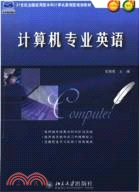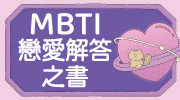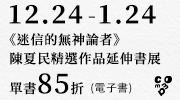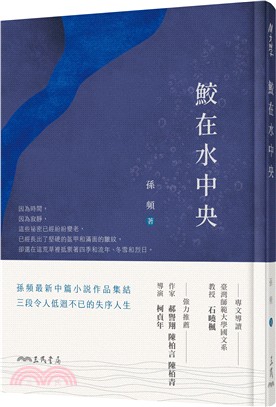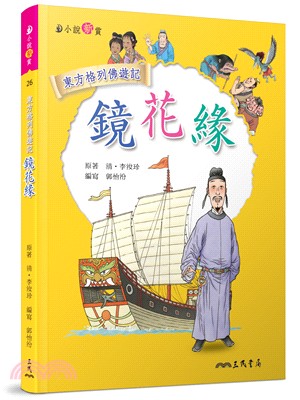電腦專業英語(簡體書)
商品資訊
系列名:21世紀全國應用型本科計算機案例型規劃教材
ISBN13:9787301212950
出版社:北京大學出版社
作者:吳麗君
出版日:2012/10/16
裝訂/頁數:平裝/269頁
規格:23.5cm*16.8cm (高/寬)
商品簡介
目次
相關商品
商品簡介
《21世紀全國應用型本科計算機案例型規劃教材:計算機專業英語》按計算機知識結構的層次對計算機科學與技術學科知識進行系統化和科學化的闡述,詳細介紹計算機專業基礎、專業技術及專業前沿知識,並根據知識點分成12章,分別講述Intenet基礎、操作系統、編程語言、程序設計基礎、數據結構和算法、軟件工程、數據庫系統、網絡和Internet、計算機圖形和圖像、電子商務、人工智能、多媒體專業知識。
書中每一章中都列出了關鍵詞匯,並對一些較難翻譯和理解的句子及短語進行了注釋,在每一章後面還列出了反映最新技術並且與正文內容相關的一篇閱讀材料,以便提高讀者閱讀計算機英文文獻的水平。在每一章的最後給出了練習題,幫助讀者鞏固所學知識,並附有譯文,供讀者參考。
《21世紀全國應用型本科計算機案例型規劃教材:計算機專業英語》可作為計算機科學與技術專業及相關電子類、信息類專業本科學生的教學用書,也可作為相關領域專業技術人員的參考書。.
書中每一章中都列出了關鍵詞匯,並對一些較難翻譯和理解的句子及短語進行了注釋,在每一章後面還列出了反映最新技術並且與正文內容相關的一篇閱讀材料,以便提高讀者閱讀計算機英文文獻的水平。在每一章的最後給出了練習題,幫助讀者鞏固所學知識,並附有譯文,供讀者參考。
《21世紀全國應用型本科計算機案例型規劃教材:計算機專業英語》可作為計算機科學與技術專業及相關電子類、信息類專業本科學生的教學用書,也可作為相關領域專業技術人員的參考書。.
目次
Chapter 1 Introduction to Computers
1.1 The history of computers
1.2 Hardware concepts and its development
1.2.1 Hardware concepts
1.2.2 Development of computing hardware
1.3 Development of software
1.3.1The first generation
1.3.2 The second generation
1.3.3 The third generation
1.3.4 The fourth generation
1.4 Reading material:Steve Jobs
Chapter 2 0perating Systems
2.1 The history of operating systems
2.2 The operating system functions
2.2.1Starting up computers
2.2.2 Loadingap plications
2.2.3 Controlling of I/O 0perations
2.2.4 Memory management
2.2.5 Filemanagement
2.2.6Command interpretation
2.3 Modern operating systems
2.3.2 Windows XP
2.3.3 Vista
2.3.4 Linux
2.4 Reading material:Windows 7 now“available to all”
Chapter 3 Programming Languages
3.1 Concepts of programming languages
3.2 Thehistory of programming languages
3.3 Components of programming languages
3.3.1Variables and data types
3.3.2 Constants and literals
3.3.3 Comments
3.3.4 Procedures
3.3.5 Functions
3.4 Reading material:Where C# fits in
Chapter 4 Programming Fundamentals
4.1 The organization of programming languages
4.1.1 Programming language factors
4.1.2 Programming language abstractions
4.1.3 Computer language types
4.2 The programming statements
4.3 0bject-Oriented programming
4.3.2 Class
4.3.3 Inheritances
4.3.4 Encapsulations
4.3.5 Messages
4.4 Reading material:Java language
Chapter 5 Data Structures and Algorithms
5.1 Data structures
5.1.1 Stacks
5.1.2 Queues
5.1.3 Trees
5.1.4 Array
5.2 The concept of an algorithm
5.2.1The formal definition of an algorithm
5.2.2 The abstract nature of algorithms
5.3 Algorithmreprese ntation
5.3.1 Primitives
5.3.2 Pseudo code
5.4 Commonal gorithms
5.4.1 Recursion
5.4.2 Sorting
5.4.3 Searching
5.5 Reading material: Sorting algorithm
Chapter 6 Software Engineering
6.1 The history of software engineering
6.2 Sofiware design fundamentals
6.2.1 Step wise refinement
6.2.2 Abstraction
6.2.3 Software architecture
6.2.4 Data structure
6.2.5 Program structure and modularity
6.2.6 Softwareprocedure
6.2.7 Information hiding
6.2.8 Design representation
6.3 Traditional designme thodology
6.4 Modern design methodologies
6.4.1 Object oriented technology
6.4.2 Prototyping
6.5 Toolsofmodeling
6.5.1 Dataflow diagram
6.5.2 Datadictionary
6.5.3 Unifiedmodelinglanguage
6.6 Reading material: Software development process
Chapter 7 Database Systems
7.1 The history of databases
7.2 The concepts of databases
7.2.1The relational mode
7.2.2 The Structured Query Language (SQL)
7.2.3 ACID properties
7.3 Data base design
7.3.1 The definitions and concepts
7.3.2 Data base normalization
7.4 Database warehousing
7.4.1 Dimensionaldesign
7.4.2 Data warehouse design considerations
7.5 Data mining
7.6 Reading material: Database management
Chapter 8 Networking and the Internet
8.1 The networking fundamentals
8.1.1 Network to pology
8.1.2 Inter face timing
8.1.3 Line configuration
8.1.4Data interfaces
8.1.5 Network application paradigms
8.2 The World Wide Web
8.2.1 Webim plementation
8.2.2 HTML
8.3 The application of the lnternet
8.4 Reading material:Networ kfirewalls
Chapter 9 Computer Graphics and Images
9.1 The fields of computerimagery
9.1.1 Graphics'
9.1.2 Image processing
9.1.3 Computervision
9.2 Steps of image processing operations
9.3 Graphics software
9.3.1 Desktop publishing
9.3.2 Electronic publishing (CD-ROMs and the Internet)
9.4 Animation
……
Chapter 10 Electronic Commerce
Chapter 11 Artificial Intelligence
Chapter 12 Multimedia.
1.1 The history of computers
1.2 Hardware concepts and its development
1.2.1 Hardware concepts
1.2.2 Development of computing hardware
1.3 Development of software
1.3.1The first generation
1.3.2 The second generation
1.3.3 The third generation
1.3.4 The fourth generation
1.4 Reading material:Steve Jobs
Chapter 2 0perating Systems
2.1 The history of operating systems
2.2 The operating system functions
2.2.1Starting up computers
2.2.2 Loadingap plications
2.2.3 Controlling of I/O 0perations
2.2.4 Memory management
2.2.5 Filemanagement
2.2.6Command interpretation
2.3 Modern operating systems
2.3.2 Windows XP
2.3.3 Vista
2.3.4 Linux
2.4 Reading material:Windows 7 now“available to all”
Chapter 3 Programming Languages
3.1 Concepts of programming languages
3.2 Thehistory of programming languages
3.3 Components of programming languages
3.3.1Variables and data types
3.3.2 Constants and literals
3.3.3 Comments
3.3.4 Procedures
3.3.5 Functions
3.4 Reading material:Where C# fits in
Chapter 4 Programming Fundamentals
4.1 The organization of programming languages
4.1.1 Programming language factors
4.1.2 Programming language abstractions
4.1.3 Computer language types
4.2 The programming statements
4.3 0bject-Oriented programming
4.3.2 Class
4.3.3 Inheritances
4.3.4 Encapsulations
4.3.5 Messages
4.4 Reading material:Java language
Chapter 5 Data Structures and Algorithms
5.1 Data structures
5.1.1 Stacks
5.1.2 Queues
5.1.3 Trees
5.1.4 Array
5.2 The concept of an algorithm
5.2.1The formal definition of an algorithm
5.2.2 The abstract nature of algorithms
5.3 Algorithmreprese ntation
5.3.1 Primitives
5.3.2 Pseudo code
5.4 Commonal gorithms
5.4.1 Recursion
5.4.2 Sorting
5.4.3 Searching
5.5 Reading material: Sorting algorithm
Chapter 6 Software Engineering
6.1 The history of software engineering
6.2 Sofiware design fundamentals
6.2.1 Step wise refinement
6.2.2 Abstraction
6.2.3 Software architecture
6.2.4 Data structure
6.2.5 Program structure and modularity
6.2.6 Softwareprocedure
6.2.7 Information hiding
6.2.8 Design representation
6.3 Traditional designme thodology
6.4 Modern design methodologies
6.4.1 Object oriented technology
6.4.2 Prototyping
6.5 Toolsofmodeling
6.5.1 Dataflow diagram
6.5.2 Datadictionary
6.5.3 Unifiedmodelinglanguage
6.6 Reading material: Software development process
Chapter 7 Database Systems
7.1 The history of databases
7.2 The concepts of databases
7.2.1The relational mode
7.2.2 The Structured Query Language (SQL)
7.2.3 ACID properties
7.3 Data base design
7.3.1 The definitions and concepts
7.3.2 Data base normalization
7.4 Database warehousing
7.4.1 Dimensionaldesign
7.4.2 Data warehouse design considerations
7.5 Data mining
7.6 Reading material: Database management
Chapter 8 Networking and the Internet
8.1 The networking fundamentals
8.1.1 Network to pology
8.1.2 Inter face timing
8.1.3 Line configuration
8.1.4Data interfaces
8.1.5 Network application paradigms
8.2 The World Wide Web
8.2.1 Webim plementation
8.2.2 HTML
8.3 The application of the lnternet
8.4 Reading material:Networ kfirewalls
Chapter 9 Computer Graphics and Images
9.1 The fields of computerimagery
9.1.1 Graphics'
9.1.2 Image processing
9.1.3 Computervision
9.2 Steps of image processing operations
9.3 Graphics software
9.3.1 Desktop publishing
9.3.2 Electronic publishing (CD-ROMs and the Internet)
9.4 Animation
……
Chapter 10 Electronic Commerce
Chapter 11 Artificial Intelligence
Chapter 12 Multimedia.
主題書展
更多
主題書展
更多書展今日66折
您曾經瀏覽過的商品
購物須知
大陸出版品因裝訂品質及貨運條件與台灣出版品落差甚大,除封面破損、內頁脫落等較嚴重的狀態,其餘商品將正常出貨。
特別提醒:部分書籍附贈之內容(如音頻mp3或影片dvd等)已無實體光碟提供,需以QR CODE 連結至當地網站註冊“並通過驗證程序”,方可下載使用。
無現貨庫存之簡體書,將向海外調貨:
海外有庫存之書籍,等候約45個工作天;
海外無庫存之書籍,平均作業時間約60個工作天,然不保證確定可調到貨,尚請見諒。
為了保護您的權益,「三民網路書店」提供會員七日商品鑑賞期(收到商品為起始日)。
若要辦理退貨,請在商品鑑賞期內寄回,且商品必須是全新狀態與完整包裝(商品、附件、發票、隨貨贈品等)否則恕不接受退貨。



